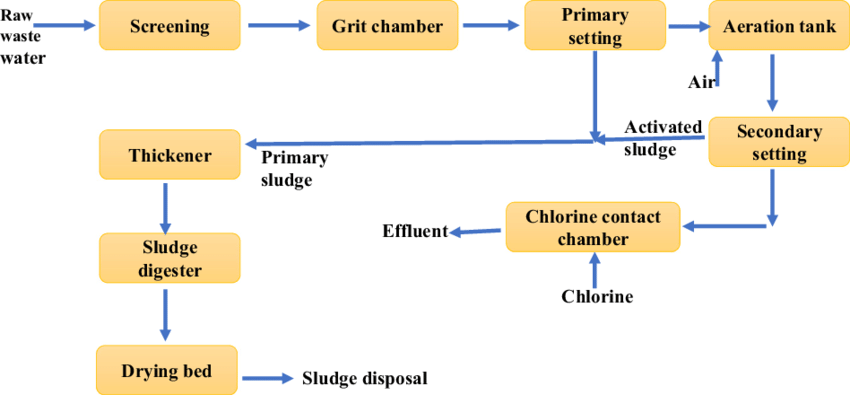The Buzz on Reclaim Waste
See This Report about Reclaim Waste
Table of ContentsGetting My Reclaim Waste To Work4 Simple Techniques For Reclaim WasteA Biased View of Reclaim WasteHow Reclaim Waste can Save You Time, Stress, and Money.The Ultimate Guide To Reclaim Waste
Residential sewer waste refers to the waste and items from a household septic container. The proper administration and disposal of residential sewer waste call for liquid waste to be transferred to a sewer treatment plant where the proper techniques and devices are applied to cleanse and dispose of waste.
Industrial waste commonly consists of possible hazards, such as flammable materials or a combination of fluid and strong waste items, and calls for an advanced and comprehensive disposal process. The disposal of business waste commonly entails the filtration of waste prior to transport to guarantee secure and proper disposal. Hazardous waste is developed from byproducts and runoff of industrial procedures and manufacturing.
This kind of waste can not utilize the same sewer monitoring transport or processes as septic or industrial liquids. The commercial waste management process requires the inspection and testing of fluid waste prior to it goes through the disposal process (liquid waste removal melbourne). Runoff waste is the liquid waste that comes from drainage and excess stormwater in highly booming areas or cities
Drainage waste can cause contamination and flooding if not handled appropriately. Making sure appropriate waste management can stop calamities and decrease ecological damage.
Reclaim Waste - An Overview
Contact PROS Services today to learn concerning our waste management and disposal solutions and the proper methods to care for the liquid waste you produce.
(https://www.awwwards.com/reclaimwaste1/)Do you recognize what happens to your water when you end, flush the bathroom or drain the washing equipment? No? Well, it's worth recognizing. This supposed 'wastewater' is not only a crucial resource yet, after therapy, will be launched to our land, rivers or the ocean. Used water from bathrooms, showers, baths, kitchen sinks, laundries and industrial procedures is referred to as wastewater.

water utilized to cool down machinery or tidy plant and equipment). Stormwater, a form of wastewater, is runoff that moves from agricultural and city areas such as roofing systems, parks, yards, roads, courses and rain gutters right into stormwater drains pipes, after rain. Stormwater flows untreated directly to regional creeks or rivers, at some point reaching the ocean.
The Main Principles Of Reclaim Waste
In Queensland, many wastewater is dealt with at sewage treatment plants. Wastewater is delivered from domestic or commercial sites via a system of sewers and pump terminals, called sewage reticulation, to a sewage therapy plant. Neighborhood federal governments build, keep and run most sewage therapy plants. Operators are licensed under the Environmental Management Act 1994 to discharge cured wastewater at an acceptable environmental requirement right into rivers.
The Division of Natural Resources recommends regional federal governments about managing, operating and preserving sewerage systems and therapy plants. In unsewered areas, city governments may call for homeowners to install specific or house sewer therapy systems to treat domestic wastewater from commodes, cooking areas, washrooms and washings. The Department of Natural Resources authorises the usage of family systems when they are proven to be efficient.
Most stormwater gets no treatment. In some brand-new subdivisions, treatment of some stormwater to get rid of clutter, sand and crushed rock has actually Discover More started making use of gross pollutant catches. Wastewater treatment happens in four stages: Removes solid issue. Bigger solids, such as plastics and other items wrongly discharged to sewage systems, are gotten rid of when wastewater is travelled through screens.
Utilizes small living organisms understands as micro-organisms to break down and remove staying dissolved wastes and great particles. Micro-organisms and wastes are incorporated in the sludge.
The 6-Second Trick For Reclaim Waste
Nutrient elimination is not readily available at all sewer treatment plants because it needs pricey specialist devices. It is ending up being extra typical in Queensland. Clear liquid effluent produced after treatment may still have disease-causing micro-organisms. If this effluent is launched right into waterways such as rivers or the sea, the micro-organisms will at some point die out.

Most wastewater flows right into the sewerage system. Under the Act, regional federal governments carry out approvals and permits for environmentally appropriate tasks (Periods) involving wastewater releases that might have a local effect.
Unknown Facts About Reclaim Waste
Or else, samples are considered research laboratory analysis. Commonly many tests are required to develop the degrees of each of the different contaminants such as oils, hefty steels and chemicals in water. Monitoring supplies valid details regarding water high quality and can validate that permit problems are being met. The information acquired with monitoring supplies the basis for making water high quality choices.